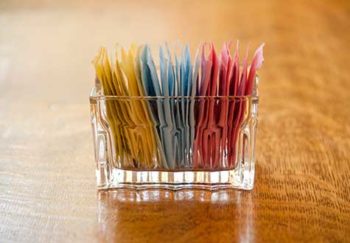Happy National Cookie Day! The official day is December 4, but, if you're like us, you could celebrate cookies any day of the year. With the holidays upon us, colorful, sugary cookies are cropping up everywhere you go. No way are any of them healthy cookies.
The Problem With Cookies
Cookies pack a punch of sugar, calories, and fat. These are not the ingredients you want in your diet if you're trying to stay healthy. You probably avoid cookies if facing high cholesterol or managing a chronic condition like diabetes, celiac, IBS, or autoimmune issues. Even people with no health concerns should limit their sugar intake, according to research.
But don't resent the cookie yet. You can bake better cookies. We have some ways you can make healthy cookies. You'll be surprised and delighted to find them delicious and nutritious.
The Best Sugar for Your Cookie?
Find out what happened when our editorial team baked cookies to taste-test different types of sugar.
How to Make Healthy Cookies: 8 Sweet Tips
#1 Reduce the Sugar
Most cookies have so much sugar that you can reduce the amount without losing taste.
Start by cutting a quarter to a third of the recommended amount. If there’s not much difference in flavor, you’ll enjoy fewer calories and less inflammation.
Note: You may need to increase the amount of liquid in your recipe as you reduce the sugar to keep cookies moist.
#2 Use Whole Wheat Flour
In many recipes, you can swap out all or part of the white flour for a whole wheat version. This adds fiber. Start by replacing only half of the white flour with wheat flour until you determine how it affects taste and texture.
Other types of flour that might work better than regular whole wheat flour: white wheat flour, whole wheat pastry flour, or almond flour.
You can also try flourless cookies and treats.
Healthy Milk for Your Healthy Cookies?
Almond, soy, coconut, oat... milk options abound. Get a quick lowdown on the benefits of milk alternatives.
#3 Substitute With Fruit
Fruit can be a great stand-in for a variety of ingredients in cookie recipes. Try bananas as a substitute for eggs or butter; unsweetened applesauce or pumpkin puree for butter or oil; dates, pureed prunes, or bananas instead of sugar.
#4 Replace Butter With Greek Yogurt
Try swapping out about half of the butter in a recipe with full-fat Greek yogurt. Your cookies will still be soft and gooey, but they’ll contain a lot less saturated fat. You'll also add a boost of protein and probiotics.
#5 Sprinkle in Some Nuts
Almost any cookie can be enhanced with the addition of chopped nuts. They not only add flavor, but increase the amount of fiber, protein, and healthy fat in the recipe.
Need Help With Diet?
Our registered dietitians can help you make a plan to meet your wellness goals.
#6 Sneak in Some Omega-3’s
It’s easy to add some healthy omega-3 fatty acids to cookie and brownie recipes by mixing flax or chia seeds in the batter.
#7 Add Some Oats
Although not appropriate for every cookie recipe, you can often reduce the amount of flour called for (and up the nutrients!) by adding oats, if the taste combo works.
#8 Make it Mini
To reduce the amount of sugar, fat, and calories you consume, make cookies smaller. The recipe may be exactly the same, but chances are you’ll eat less.

